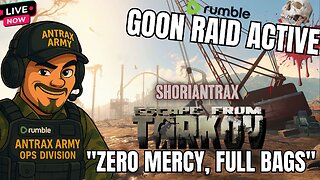Premium Only Content

Keys 2 Life EP39: Brad Kittel | Tiny Texas Houses
Tiny Texas Houses is a manifestation based on an ethos of building with Pure Salvage to save maximum energy, resources, and quality materials, as well as eliminate imports, toxins, and waste of energy to make parts that were made better long ago than we can build today.
Pure Salvage Living is the philosophy behind Tiny Texas Houses. We hope to promote the use of salvaged and organic materials to create healthy tiny homes and to be used in a variety of applications. We believe we can create a drastic environmental, political, and social change by simply adopting the idea that salvage "saves.
Over the decades I have taken apart so many things in order to make new creations that I had forgotten when
I first got into Salvage Building. I can provide a quick history, which would start when I was a kid but I will
instead hit lightly upon the last 30+ years came to Austin. My first Tiny House was a 66 passenger Bluebird
School Bus that I converted into a home while going to college in St. Petersburg, Florida. I stripped the steel
skin from the inside and replaced it with dumpster harvested Tongue and Groove Redwood and Cedar from
dumpsters where new apartments were being built in Florida while I went to college. I left Florida after
graduating and crossed the country to end up in Austin Texas, still living in that bus three years later. I bought
my first house 1985 and my son arrived in 1986 while we were living in East Austin, on Hollywood Avenue.
That was my second house I bought to fix up when the 1980’s Boom went Bust in 1986 as I started my real
estate business specializing at Inner City Old House brokerage. As a fledgling specialty real estate company I
focused on old houses, but particularly East Austin in 1985, the only part of town I could afford to live in. As
the real estate prices plummeted, crime increased east of UT, and eventually the student shuttle stopped
running down Manor Rd. due to the high crime rates and Manor Road was even severed from entering UT for
more than a decade after that decision. In the midst of the bust and with no working capital or financing
except by the owners, I started gutting and revitalizing condemned houses in what was known then as the
University Park Subdivision. I was able to gradually help re-establish a sense of community by creating,
publishing, and distributing to all residents including mailing to all out of town or investor and owners. In the
Newsletter I worked to create the mystique of French Place to market it with and appealed to the nonconforming couples, the same sex, mixed race, long haired hippies, and other people who just didn’t quite fit
into some of the other areas or could not afford to live there.
I built my brokerage niche as “Discovery Investments, Inner City Home Brokers” with which I sold more than
60% of the real estate in the 78722 zip code for the next 10 years. I remodeled nearly 40 houses that were
dilapidated eyesores, usually condemned and sold them to first time buyers for $45,000-$85,000 during the
late 1980’s and early 90’s. As we transformed the trash into homes to be proud of, the neighbors got proud of
theirs and fixed them up to. I always called it the Jones effect. The area improved dramatically as we
eliminated the hiding places for the bad things that were happening, from raising fighting cocks and pit bulls
to dealing drugs or pimping addicted women, as was common on the 2000 block of Poquito through 22nd
,
Manor, and MLK. We had all of the things no one else in Austin wanted, and it was not going away, so I
bought a building right in the middle of the action a week after a 16 year old murdered a 17 year old over who
would have the right to deal drugs from that corner for the day. The hookers who walked the other corner we
back to work hours later displaying their wares as they traversed back and forth across what would become
the front yard of my real estate offices.
This was right after UT got its hand slapped for absorbing property through eminent domain in an attempt to
clean up the East side neighborhood and secure the plans for their future growth Eastward from campus. I
helped engineer the turnaround that comes with most university neighborhoods. The restaurant district
transformation came after the old Roy Lees Grocery was turned into the Discovery Incubator (an ill timed
cybercafe and .com, web development, music studio, com studio all built out of Pure Salvage). The building
eventually became Hoovers restaurant. I spent 4 years buying houses to chase away the criminal elements
down the streets behind the restaurants. Unfortunately I learned what “gentrification meant in the process”
as I got blamed for causing it and fueling it by being the most visible real estate broker and redeveloper in the
area. I had established a good name and gotten press for my work after winning numerous revitalization
awards and winning the “Entrepreneur of the Year Award” in ‘94 for being Socially Responsible
A couple years later I decided it was time to quite working 100 hour weeks and semi retire into the quiet life of
a small town the size of the 78722 zip code to spend more time with my 11 year old son. I had made a good
bit of money on paper and remember the slogan that “Pigs get fat and hogs get slaughtered”, so I started
cashing out of the property I owned to build Discovery Architectural Antiques. A decade later, my son was
grown and Discovery had also grown to be gigantic but not nearly as profitable as holding on to the real estate
I owned in Austin would have been. Still I grew a business to be the biggest of its kind and realized the
business model was in danger due to rising fuel prices. In light of the impact on the economy that I foresaw a
couple years ago I started thinking of what I could do to grow with the changing economy. Tiny Texas Houses
allowed me to launch something no one in the country is doing and that no one else could fuel with the king of
inventory I have on hand. First I had to prove that Tiny Texas Houses could be designed, built, and sold for a
price that made sense. The next step is to then to take it to others so they too can do the same thing and
create housing, jobs, training, and a green building future for millions of Americans.
Gonzales was a neglected Texas town that had fought off newcomers and change for nearly a century, and
managed to preserve much of its history in the process of steady declines in population and businesses.
Where more than 50% of its buildings were empty downtown when I first arrived, and many big old houses
were all boarded up, very little of that exists today. 90% of the 150,000 square feet that Discovery occupies,
90% was empty when I started buying there 13 years ago. Our business had a $65,000,000 impact on their
economy as it brought in new money, jobs, and life into 14 buildings that house the store and inventory. This
was all done with salvage materials being gathered from across the country and being stored, processed into
doors, flooring, or other new lives when sold. Eventually I could see the future of the business model was in
peril because of the rising costs of transport for goods as well as customers driving long distance to shop in
Gonzales. The costs of storing and handling added to the costs and no one was coming up with uses that
would increase consumption at a rate that would equal the potential supply. Changes in public perception
had to change for any adaptation of the Salvage Revolution concept of using salvage materials to build with on
a realistic basis. Also the cost to build with salvage was so much higher because of the human handling of it,
storage, and the fact that it can be harder to work with when rebuilding. By eliminating long distance
transport and reducing the time that salvage is in inventory these factors could be streamlined and thus the
costs of housing. Transportation and the labor for moving inventory has gone up in cost to the point that it
was impacting prices and sensibilities needed to make salvage building work. That is when I came up with Tiny
Texas Houses.
Initially I needed to prove to people that small space can be quite livable and that the best of them can be
built with the finest wood we have ever grown in the USA. It s not just the lumber, its all of the our salvaged
materials including the glass, flooring, doors, hardware, sinks, and tubs. Even though it is old, antique if you
will, we can build nearly the entire house out of salvage. In spite f the front end costs, we are not spending
any more in the long run because these houses will last so much longer than conventional built houses and
they are truly 95% green, salvage built houses. No one had much faith in my idea until I got the first few built.
Then people turned their heads when I started to sell them. But the idea was so hot that everyone around the
country started asking when we would have them available in their area and it became clear with the media
attention that this might be the right time to finally see a Salvage Revolution succeed.
If the right media presentation is made and people start to join the movement of living simpler and Salvage
Building ramps up to match what Salvage Miners can save, there is so much energy and money to be tapped
that it can fuel itself with the entrepreneurial spirit that this country is supposed to be known for. Imagine
starting hundreds and thousands of Tiny Texas Outposts that will support independent self employed small
business people working with each other to all have a better life from the results. Co-ops sponsored by
Salvage Hunters or by the Salvage Foundation so as to share the profits and facilitate maximizing the yield and
the results of each Outpost. They also fuel the growth of TTH Villages that will grow around the Outposts.
Each become communities that unite under common banners of minimalist living, eco consciousness, and
other things that cement colonies together. Being part of something global and giving people the sense of
belonging has worked in East Austin, in Gonzales, and many other places where the social experiments have
been done.
I believe that through Tiny Texas Houses we can show that Salvage Building can be done in many styles and
provide for many different regional needs. People can be taught without great effort to build homes that they
can live in out of homes that no one wants to live in anymore. Once enough people see that it is possible and
learn how easy it is, then it is logical that they will want to join in. I think it will help fill a void that nothing else
is lined up to fill at the moment. This is especially true when you realize just how fast this movement could be
fueled if the media got on board and supported it. After all, in many ways, this answers of societies pressing
needs in the next five to ten years and guides people into Green Living in an exciting and real world way that
the average person will soon be able to relate too. The declining economy is a perfect environment to grow
this new form of thinking about space. How much do we need if it is built well and the space used wisely?
Add portability, energy efficiency, and many other modern ideas for saving energy and you have a good
solution to a growing number of problems that does not require us to grow anything except people
consciousness and skills. All American mined ore to make the hardware, native trees that were hundreds of
years old for wood, hand blown glass for windows, and the human energy of our ancestors stored proudly in
products that will last for hundreds of years with only minor repairs, if any.
After 30 years of Salvage, in all of its forms, from parts and pieces, to houses, to neighborhoods, this is the
most promising time I have ever seen for the concept of a Salvage Revolution to take place as part of the
Green Revolution that is under way already. It is a bit more extreme in that it leaves out most of the newly
manufactured building materials by virtue of its mission, to use salvaged materials to build with whenever and
where ever possible. While this involves a myriad of issues, few if any are a deterrent to success if we set our
mind on that goal and do not get distracted. By mixing the old with new we can create a new generation of
architecture that will include the past but plan for the next hundred years with an eco consciousness we have
barely employed in the last 60 years. I believe it is simply that people cannot imagine the results or
comprehend the possibility of a solution unless they see it being done, but once it catches on and the masses
believe it is possible, the movement will take hold and grow on its own.
Learn more about Brad's work here: https://tinytexashouses.com/
SIGN THIS PETITION: www.Savebennys.org
Learn how to stop paying taxes at: www.FreedomLawSchool.org/affiliate/vaccinepolice
USE coupon code "stew" for ALL of our links:
https://www.airwaterhealing.com
-
 2:20:51
2:20:51
Stew Peters Network
3 days agoStew Peters LIVE: The FINAL SOLUTION: Reclamation and Accountability
22.5K119 -
 30:09
30:09
Afshin Rattansi's Going Underground
1 day agoCurtis Yarvin: ‘Trump 47 is 10x More Powerful than Trump 45’ & the TOXIC US-Israel Relationship
17.8K34 -
 LIVE
LIVE
Drew Hernandez
8 hours agoTRUMP HINTS DEMS COULD HAVE PLANTED FAKE EVIDENCE & MANIPULATED EPSTEIN FILES
1,008 watching -
 LIVE
LIVE
Eternal_Spartan
11 hours agoThe Legend of Zelda: Majoras Mask Ep. 5 | USMC Vet | Come Join the Best Chat on Rumble!!!!
91 watching -
 3:44:24
3:44:24
Barry Cunningham
6 hours agoBREAKING NEWS: LIVE COVERAGE OF NEW YORK POLICE OFFICERS UNDER SIEGE!
88.9K65 -
 2:51:25
2:51:25
The Pascal Show
4 hours ago $0.34 earnedBREAKING! Active Shooter In Midtown Manhattan NYC Multiple People Shot!
11.7K1 -
 10:25
10:25
MattMorseTV
9 hours ago $2.05 earnedVance just DROPPED a NUKE.
38.8K40 -
 LIVE
LIVE
Jokeuhl Gaming and Chat
6 hours agoDARKTIDE - Warhammer 40k w/ Nubes and AoA
187 watching -
 2:53:08
2:53:08
Shoriantrax
3 hours agoLIVE: Hardcore Chaos in Tarkov – Loot, Die, Repeat!
5.99K -
 LIVE
LIVE
John_Goetz
4 hours agoJohn Gets Gaming - Medal of Honor Vanguard Part 2
10 watching